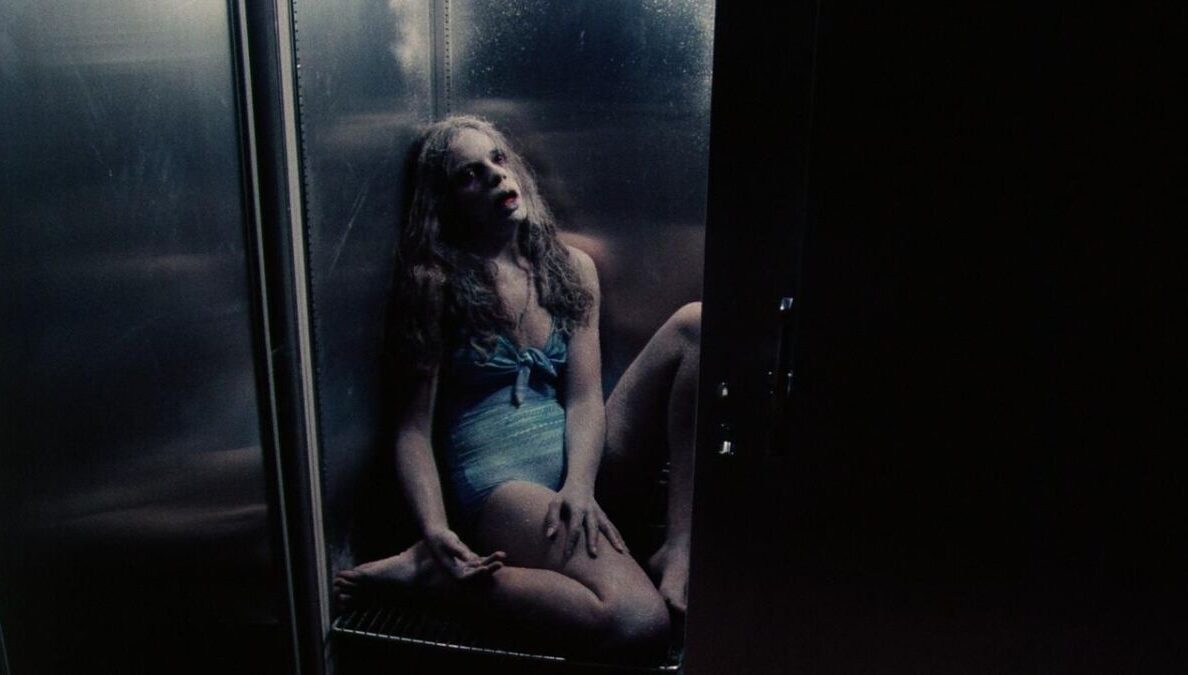Since his last foray into horror with eXistenZ in 1999, David Cronenberg has made two gangster movies with Viggo Mortensen, highlighted Keira Knightley’s jaw work in A Dangerous Method, put respect on Robert Pattinson’s name with Cosmopolis, made whatever Maps to the Stars is, and more – he certainly isn’t a one trick filmmaker. But no matter how many movies he makes without any prosthetic body extensions or disintegrating skin, he’ll always be the king of body horror. And well he should be: Cronenberg’s first five films are all foundational films for the subgenre, and brilliant examples of intelligent horror films that are as thought-provoking as they are stomach-churning.
At this point his name is synonymous with body horror, with “Cronenbergian” and “Cronenberg-esque” used with relative frequency online to describe films that focus on the malleability of the human body. The two ideas are so intertwined that the Rick and Morty multiverse even has an entire species of mutated humans called “Cronenbergs” in honor of the director.
So while he’s been out of the horror game for some time, though it seems a return is on the horizon, he’s certainly still a master whose horror movies are worth celebrating, and ranking.
David Cronenberg’s Horror Movies Ranked
9. The Dead Zone (1983)
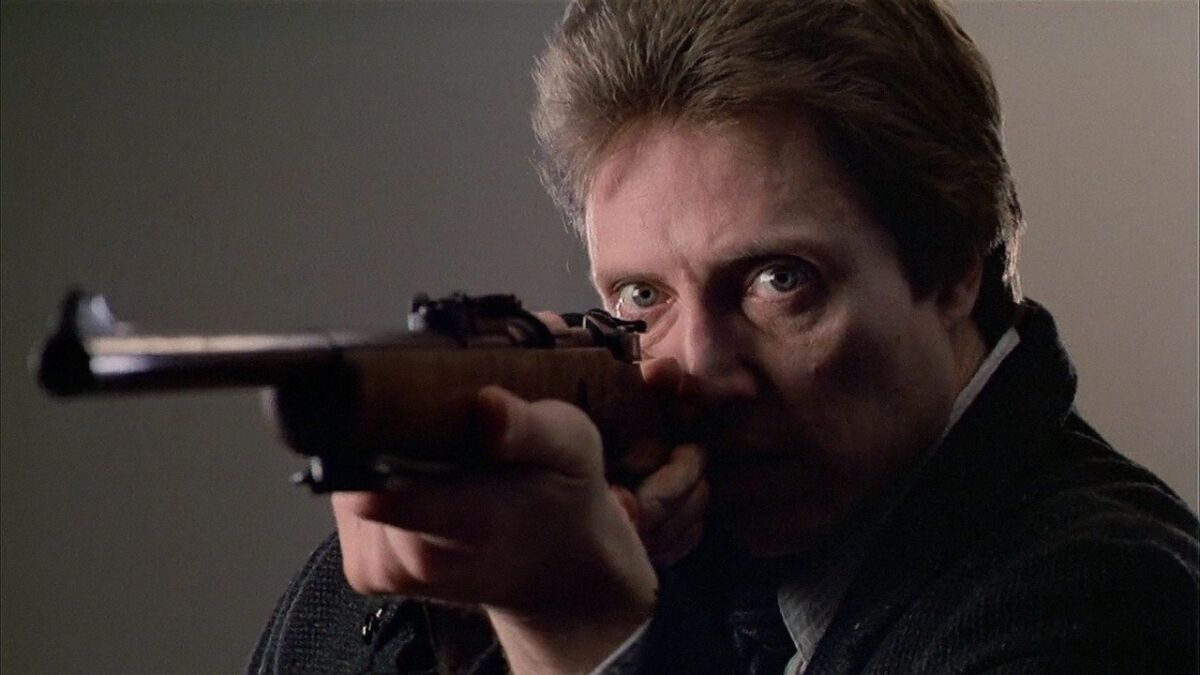
The Dead Zone is a good movie, so don’t mistake its bottom placement in this ranking for harsh criticism. The reason The Dead Zone lands dead last among Cronenberg’s horror films is that it feels like one of the better Stephen King adaptations, and almost not at all like a Cronenberg film.
Cronenberg brings the film a wonderful atmosphere and draws out the tragic along with the horrific, but there’s not really any focus on the body or identity here, at least not in the classic Cronenberg style.
The film focuses on Johnny Smith (played beautifully by Christopher Walken), who develops the ability to see people’s futures when touching them after returning to consciousness from a five year coma. Smith’s ability becomes a news story and he’s soon called upon by local law enforcement for help, but instead of this plot taking up the rest of the film and building to a dramatic climax, the film takes some twists and turns leading to a short story collection feel.
The fact that The Dead Zone plays more like a collection of vignettes means that there isn’t a key horror, as the horror that’s associated with Smith’s ability changes depending on what he sees. And because the film has at least three full stories, each of which introduces a new object of horror and a new objective for Smith, it’s hard to get fully invested in any of them.
And yet, Walken does a fantastic job with Johnny Smith, as his character development is the only throughline that we get for the full runtime. With each change in the story’s direction we see him struggle with his choices and what he feels is his duty. By the end of the film, even though none of the narratives have been entirely captivating, the audience has built a significant relationship to Walken’s character which does make the film’s finale emotionally, if not entirely narratively, fulfilling.
8. Shivers (1975)
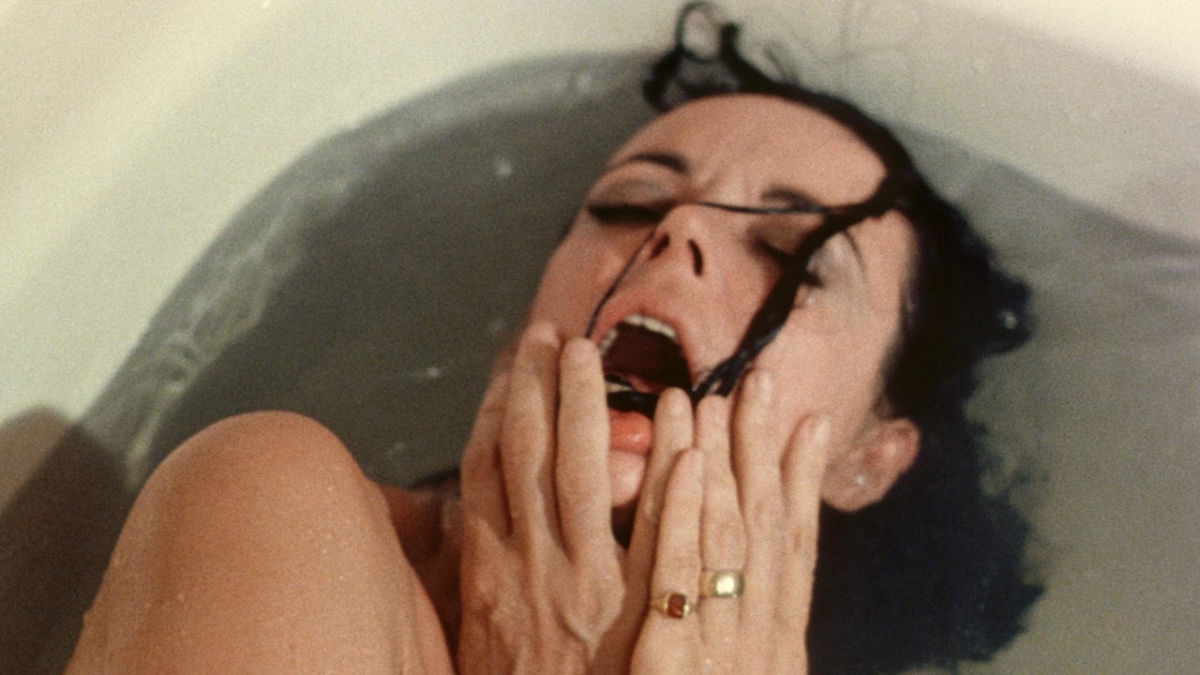
“Sex zombies” sounds like a fun movie premise, until you realize how much sexual violence that entails. This is the problem with Shivers, Cronenberg’s third feature, the first with a more straightforward narrative structure and a runtime over 63 minutes. The film’s basic story feels like a mix of the zombie genre and J.G. Ballard’s novel High Rise (which debuted the same year and was later adapted to film by Ben Wheatley) with an added dash of sexual body horror.
Shivers follows the outbreak of a disease in a self-sustaining high rise building located on an island outside Montreal. But this isn’t just any disease: It’s a parasite that drives the carrier to become unbridled id, purely interested in spreading the parasite through sex. But the parasites aren’t only able to spread through sex, they’re able to expel themselves from carriers’ bodies, survive independently, and infect (or, perhaps more correctly, attack) non-carriers without human to human contact.
These parasites look awful, like a thick phallic internal organ that moves like a worm, so when they start slithering about and attacking the people of the complex, it makes for some truly sickening stuff, especially in the case of a parasite that crawls inside a woman taking a bath. At first we see these parasites expelled from carriers’ bodies in coughing fits, but as the film goes on, they begin to protrude from characters’ stomachs, ultimately bursting through in a way that might just have been made a bit more famous elsewhere.
And yet the most disturbing aspect of the film is the near constant sexual violence of the film’s latter half. Shivers is likely the most upsetting of Cronenberg’s films because of this barrage of too close to reality sexual violence that isn’t stylized or made to feel like heightened genre violence in any way, which, of course, has its pros and cons as depictions of sexual violence in film are never simple. And that itself makes the film both better, as a genuinely upsetting horror film, and worse, even with the premise there is truly no need for the film to be this heavy on the sexual violence.
But what makes Shivers stand out above The Dead Zone is that it’s entirely a David Cronenberg film, and easy to spot as his first real foray into narrative filmmaking: it’s ambitious in scope (both thematically and plot-wise), very rough around the edges, and manages to throw out perhaps too many ideas in its sub-90 minute runtime.
7. eXistenZ (1999)
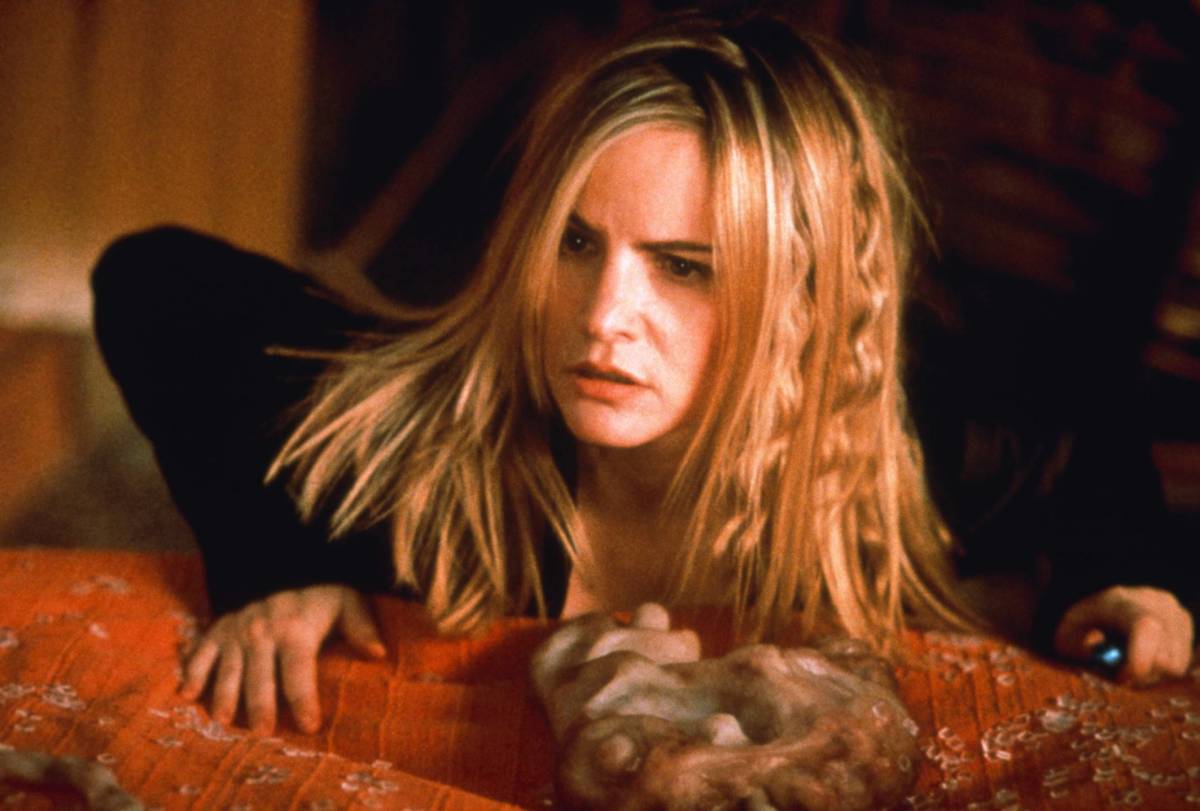
eXistenZ is one of the few Cronenberg films that feels like it was responding to a trend, albeit a trend that fits perfectly within the filmmaker’s thematic interests.
Cronenberg has always been interested in the blurriness of reality in the face of any challenges to it, so in fact it’s somewhat surprising that it took him more than a decade and a half to explore the concept of entering a game after Tron brought it to the mainstream in 1982. Though there are those who (with good reason), believe that eXistenZ is what became of Cronenberg’s initial drafts for Total Recall.
Of course, eXistenZ is a much more unsettling movie than either Tron or Total Recall, as it’s not simply a film about humans entering a virtual world for a fun action-packed adventure, but instead places the audience in a world where the fact that perceptions of reality cannot be trusted has led to a violent reaction among a group calling themselves “Realists.” Against this backdrop, the film follows game designer Allegra Geller (Jennifer Jason Leigh) and game marketer Ted Pikul (Jude Law) as they dodge Realists and seek to ensure the safety of her newest game: “eXistenZ.”
Much of the film feels more like a science fiction film than a pure horror film, but there is certainly horror in not being able to trust reality. And if that concept weren’t scary enough, the film makes sure to deliver significant body horror as well. Similar to The Matrix (which came out the same year), humans enter the virtual world by plugging devices into themselves using ports in their bodies. But unlike The Matrix, these ports and the “game pods” with which they function are not clean and metallic, they are fleshy, pulsating biotechnological creations that can become diseased and infected.
The film turns into a bit of a twist-fest in the finale, but it does make the viewing experience disorienting in a way that leaves the audience unsure of what is real and what is the game, which seems to be the only goal of the film. So while it’s a bit unoriginal and not the most cohesive of Cronenberg’s films, it still delivers on both the body horror and a more cerebral horror.
6. The Brood (1979)

The Brood is a break up movie like no other. Made in the wake of Cronenberg’s divorce from his first wife and the custody battle over their daughter, it’s somewhat uncomfortable to recognize how much of his real life and feelings Cronenberg put into The Brood, especially given the film’s violent finale.
The story follows Frank Carveth (Art Hindle) as he seeks to gain total custody of his daughter Candice (Cindy Hinds) and end visitation with her mother Nola (Samantha Eggar), who is currently being treated for mental illness with radical psychiatric techniques at an institute.
Those radical techniques are distinctly Cronenberg: Hal Raglan (Oliver Reed), the head of the institute, pushes his patients to manifest and release their psychological trauma as physiological change through what he calls “psychoplasmics.” It’s an extension of the very real effects that psychological stress can have on the body, but it’s quite the extension. By the end of the film we learn that the titular brood has literally been born from Nola’s anger, the frightening children with strange faces and no belly buttons are physical manifestations of her rage. The birthing process is astoundingly grotesque, and Eggar does an incredible job pushing the scene as far as it can go by ripping the external womb holding the child with her teeth.
But most of the horror in The Brood isn’t body focused, despite the perfect body horror premise and fantastic reveal of Nola’s physiological manifestation of mental anguish. In fact, most of the horror doesn’t even come directly from the monstrous children, or the genuinely brutal violence that they enact. The majority of the horror in the film comes from the uncertain dread about who will be next to come face to face with Nola’s wrath in the form of her brood.
The first victims are Nola’s mother, who we later learn was abusive, and her father, who allowed the abuse to continue. But then things become more diffuse as one of the children attacks Frank, and upon Nola learning about Frank’s burgeoning relationship with Candice’s teacher, the children kill the teacher in front of her class.
Despite its undeniably uncomfortable context, The Brood continues the trend set by Rabid (see below) of Cronenberg finding his particular sweet spot in horror filmmaking. The film mingles speculative science fiction and horror with equally fascinating and revolting results, as well as delivering an absolutely astounding performance from Eggar.
5. Rabid (1977)
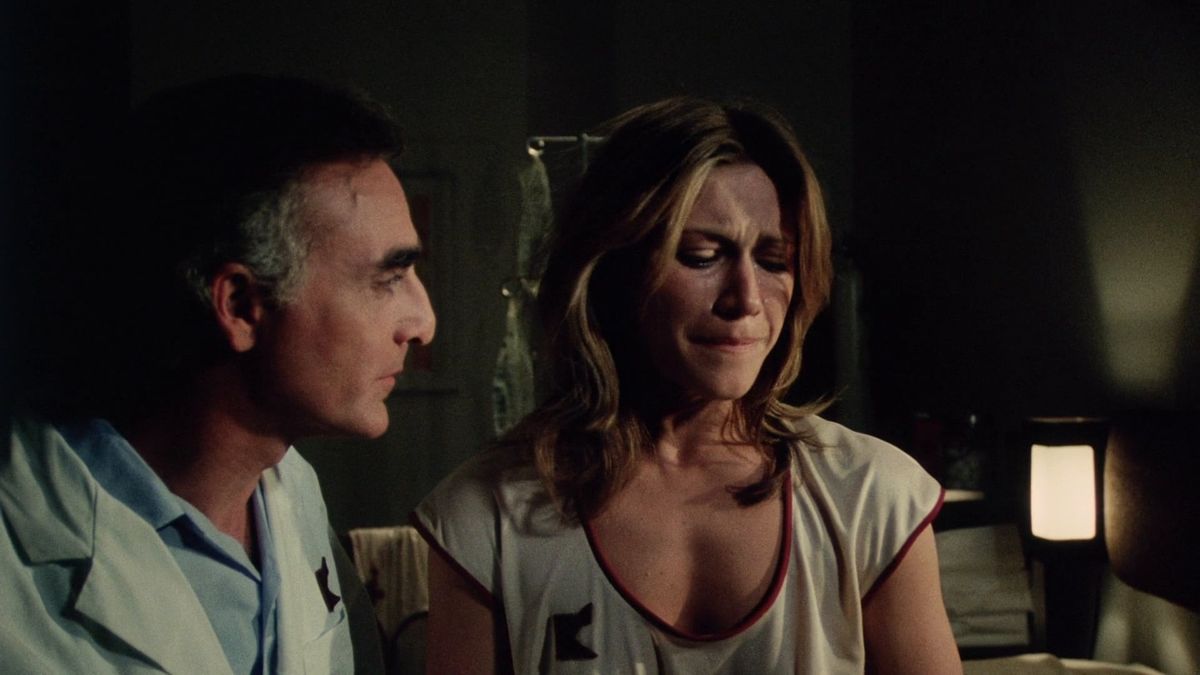
Rabid may be Cronenberg’s first great film. Released two years after Shivers, Rabid shares significant DNA with that film as it follows the outbreak of a disease that rapidly tears through a population, but the population is larger and the disease is both more interesting and less reliant on sexual violence for transmission, leading to a better movie in a variety of ways.
Rabid begins when biker couple Rose (Marilyn Chambers) and Hart (Frank Moore) get into a particularly nasty accident near a plastic surgery clinic outside Montreal. Hart is able to walk away from the accident without any major injuries but Rose, who has fallen into a coma, requires serious treatment as soon as possible leading the plastic surgeons to perform a novel operation, making use of skin grafting techniques for internal injuries. There’s a good amount of exposition on exactly what the doctors are doing to save Rose, but the main point is that it’s an untested procedure that may develop carcinomas. What develops isn’t anything like a cancer we’ve seen before in reality or film.
When Rose wakes up a month later, the first encounter she has with a person leaves him bleeding and dazed after an embrace, while she seems invigorated. It’s not clear what’s going on immediately but as the film goes on we learn that a small vaginal opening has emerged under Rose’s left armpit, inside of which hides a sort of stinger that penetrates and draws the blood of people that Rose embraces. But not only that, it also gives her victims a disease that certainly seems like rabies.
What makes Rabid so watchable and remarkable is that it mixes the sexually fluid vampire films of the 1970s with the zombie outbreak concept and just a dash of Cronenberg’s signature body horror. Like a vampire, Rose must feed on the blood of others to sustain herself. She struggles with this new mode of existence, and even farther than the inherently sexual vampire, her method of draining her victims involves penetrating them with a phallic stinger that appears from within the vaginal slit in her armpit. The zombie aspect only appears at the second level of the disease as Rose is able to remain coherent and intelligent after she develops the stinger, but those that she draws blood from turn, well, rabid. Though it’s worth noting that these rabid people are still capable of using tools, as we see a doctor use surgical scissors to remove a nurse’s finger and construction workers drill through a car’s door and driver.
Rabid also builds incredibly organically from a film about a young woman who is suffering from an affliction that she is unsure how to deal with, into a full fledged apocalyptic, doom-drenched story within 90 minutes. The film manages to move beyond the simple fear of bodily harm and disease to the horrors of martial law, and in doing so its tone evolves from something that’s almost fun and slasher adjacent (with a beautiful woman as the star to top it off) to something that resembles the absolute social collapse of Romero’s Dawn of the Dead and 28 Weeks Later.
Fun fact: Marilyn Chambers was an adult film star, and though she’s quite good here, with enough charisma and talent to carry the film almost entirely on her own, she went back to porn because she could make more money there. She also certainly brings her seductive powers to bear on the role here as she invites men and women to come close and embrace her.
4. Scanners (1981)

Scanners, like eXistenZ, often feels more like a sci-fi movie than a horror movie. It is a horror movie though, one that draws its horror from uncomfortable tension and disturbing concepts before exploding (yes, sometimes literally) into jaw-dropping bravura effects sequences.
The tension that Cronenberg builds in Scanners is sometimes centered in scenes like the one linked above, but much of it permeates the entire film in a way that mingles the oppressive and distinctly horrific paranoia of Rosemary’s Baby with a plot closer to the conspiracy thrillers of the 1970s. The content of that conspiracy here is something much more disturbing than anything in a political thriller, as it’s revealed that a company has experimented on pregnant women without their knowledge in the hopes of breeding humans with telekinetic abilities called “scanners” as weapons.
Scanners’ plot is far from simple and takes a number of twists and turns, as any good conspiracy thriller should. But the main focus of the plot is on Cameron Vale (Stephen Lack), a scanner who is conscripted by the ConSec company to find and eliminate rogue scanner Darryl Revok (Michael Ironside) who seeks to take over the world for scanners. It’s a plot that’s undeniably similar to the basic premise of X-Men, but unlike the child friendly adventures of those mutants, the scanners in Scanners have to contend with things like trepanning into their own skulls so that they do not go mad.
It’s a deeply disturbing movie that also has some thematically potent but silly (and comic booky) stuff in it like Vale downloading the contents of a computer to his mind by using cyberpathy and a telekinetic showdown between Vale and Revok in which Vale takes over Revok’s body and mind. What keeps those silly moments scary though is the incredible effects work that emphasizes the physical consequences of these mental powers, with bulging veins and self opening wounds, and the final battle being one of the most awe inspiring and upsetting sequences in all of Cronenberg’s films.
It’s also worth noting that Scanners has one of the best and one of the worst performances in Cronenberg’s filmography. Lack is genuinely horrible in the lead role, which makes sense given that he is primarily a visual artist, but Ironside is fantastic in every scene as he commands attention and manages to be a captivating mix of charismatic and frightening.
3. Dead Ringers (1988)

Dead Ringers is the only other film on this list besides The Dead Zone that isn’t premised on some form of transformation or modification. And like The Dead Zone, Dead Ringers is an adaptation and not an original idea of Cronenberg’s: the film is based on the novel Twins by Bari Wood and Jack Geasland, itself a fictionalization of the real case of the Marcus twins. But unlike The Dead Zone which feels like Cronenberg working (albeit very well) as a director for hire, Dead Ringers, with its blurring of identities and lines like “I’ve often thought there should be beauty contests for the insides of bodies,” is quintessential Cronenberg.
The film follows twin gynecologists Elliot and Beverly Mantle (both played to perfection by Jeremy Irons) who regularly impersonate one another, whether it be Elliot playing the role of Beverly schmoozing with donors, or Beverly acting as Elliot when taking a patient at their fertility clinic. But this game they play isn’t innocent, the brothers use their ability to act indistinguishably to “share” women whom Elliot seduces while pretending to be Beverly, allowing Beverly the opportunity to then sleep with them after they believe they’ve already been together. The story begins when Beverly falls in love with such a woman, actress Claire Niveau (Geneviève Bujold), who, despite the twins’ best efforts, can tell them apart before she even learns that there are two of them.
The film is deeply unsettling, not just for its disgusting set up of twins who use their ability to impersonate one another to serially rape, but also because there’s an ineffable quality to the film, something (beyond the obvious) feels off throughout, and it makes watching the film feel like there’s something just out of reach that can’t be grasped. This feeling is there before the film even introduces the deeply troubling “gynecological instruments for operating on mutant women” that Beverly creates, which are all the more horrifying because most of their uses are left to the imagination.
Dead Ringers is one of Cronenberg’s best adaptations, not just in horror but in all genres, because the material fits so perfectly within his existing preoccupations and because he is able to use that material to make one of his most disturbing horror films without an abundance of gore.
Fun fact: the film was initially titled “Twins,” sharing the title of the book it was based on, but it had to be changed so that it wouldn’t get confused with the Arnold Schwarzenegger and Danny DeVito starring comedy that was also released in 1988.
2. The Fly (1986)
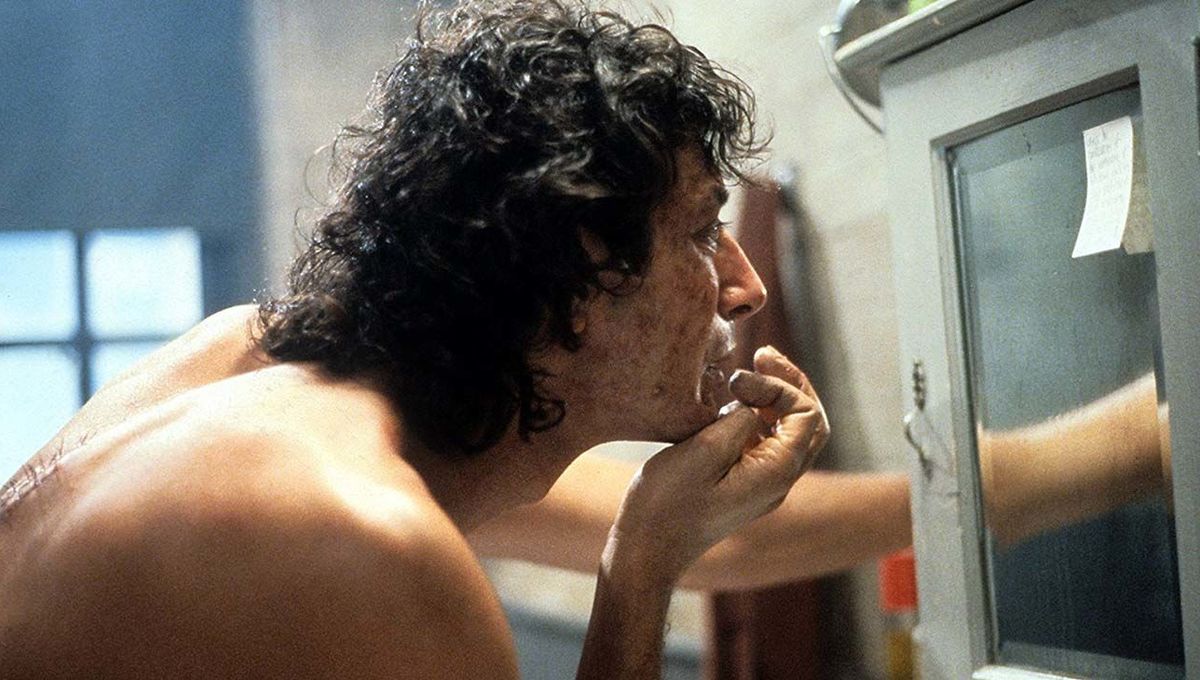
There are only really two options for Cronenberg’s best horror movie (hot takes aside): The Fly and, spoiler alert, Videodrome.
While The Fly lands in second place here due to its comparative lack of themes (within the world of the film at least, it’s undeniably interesting to read as an AIDS allegory), it’s perhaps the most impressive and disgusting of all of Cronenberg’s horror work as a pure body horror film. Of course, like all of Cronenberg’s work, the film isn’t satisfied to simply deliver its horrifying thrills, and deepens the story with a tragic romance that’s almost as emotionally brutal as the horror is visceral. The Fly is also a remake, but like Carpenter’s The Thing, it so wildly reinvents the story, both in its setting and narrative as well as the form of the horror, that the only thing that connects the film with its predecessor is the basic premise based on the dangers of teleportation technology.
The story starts when journalist Veronica Quaife (Geena Davis) meets scientist Seth Brundle (Davis’ then real life boyfriend Jeff Goldblum), who introduces her to his radical work on teleportation. Brundle has created “telepods” which allow both inorganic and organic matter to be teleported between them.
After a successful animal test, Brundle moves on to testing on himself, but a fly sneaks in with him. In the aftermath of the teleportation, their cells have become intertwined and Brundle begins to slowly transform from man into something between a man and a fly. As all of this goes on, the relationship between Quaife and Brundle develops, so when his human body begins to deteriorate and transform, we aren’t just witnessing one man’s loss of body, mind, and self, but also seeing a woman lose a man she has fallen deeply in love with.
The body horror effects for Brundle’s transformation are astounding, as we see him at different levels of the change which becomes more and more extreme with each scene – it’s easy to see why the makeup team of Chris Walas & Stephan Dupuis won the film an Oscar for their work. And while the effects are certainly horrifying, the film also mixes horror and comedy a number of times when it comes to Brundle’s changing body, with one surprise body betrayal playing as much as a joke as it does a jump scare.
The Fly is the most visually impressive and the most emotionally impactful film on this list.
1. Videodrome (1983)
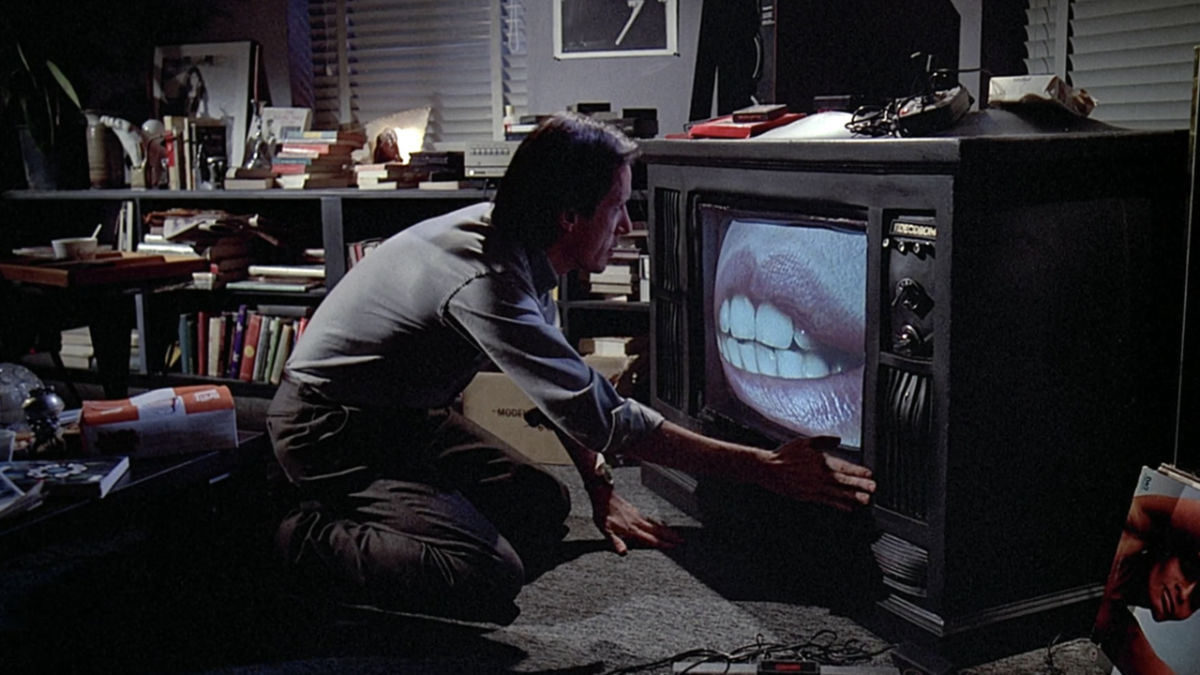
Videodrome, informally also known as “Cronenberg read McLuhan,” is Cronenberg’s horror masterpiece. It mixes his thematic preoccupations with technology and its relationship to the malleability of identity, reality, and the human body with some of the most visually striking and disturbing body horror in his filmography. If Dead Ringers is Cronenberg working primarily on the level of ideas and The Fly is him focused on delivering amazing and terrifying images, Videodrome is where these two meet at the highest level.
Videodrome centers on Max Renn (James Woods), the head of a TV channel always on the search for more extreme content. He discovers “Videodrome,” a show that focuses purely on sex and violence with no plot whatsoever. The film then takes twists and turns as Max seeks to discover who creates Videodromeand finds himself in the middle of a socio-political battle being waged through television broadcasts that cause brain tumors and hallucinations. It’s a film that’s purposefully difficult to follow, placing the audience in Max’s point of view as he begins to lose his grip on what is real and what is hallucination.
The film is a sort of meta text on Mcluhan’s famous statement that “the medium is the message,” as we see Max’s reality become transformed by the television that he has consumed and get lines like “television is reality, and reality is less than television.” By the end of the film, after we witness an old television set explode following an image of Max shooting himself, there’s almost a real world concern that the screen showing us the film will explode when Max actually shoots himself in the “reality” of the film. It’s an incredible feat that I still am not able to understand but fall for every time I watch the movie.
But beyond the fear that the screen presenting the movie may explode into our reality, Videodrome also offers one of the most disturbing pieces of body horror in any Cronenberg film in the form of something that can only be described as a videotape-receiving-vagina that develops on Max’s stomach. The visual itself is troubling, but the repeated input of tapes into Max’s body through the slit so that he can be “programmed” is painful to watch. Of course there’s also the sequence containing the iconic image of Max’s face in the television screen, which transforms the TV set into a pulsating, breathing, sexual being.
Videodrome is a masterpiece, the peak of Cronenberg’s career as a horror filmmaker, and in fact it might be the greatest film in his filmography period.
READ NEXT: 15 Underrated Horror Movies You Should Watch
Some of the coverage you find on Cultured Vultures contains affiliate links, which provide us with small commissions based on purchases made from visiting our site.
